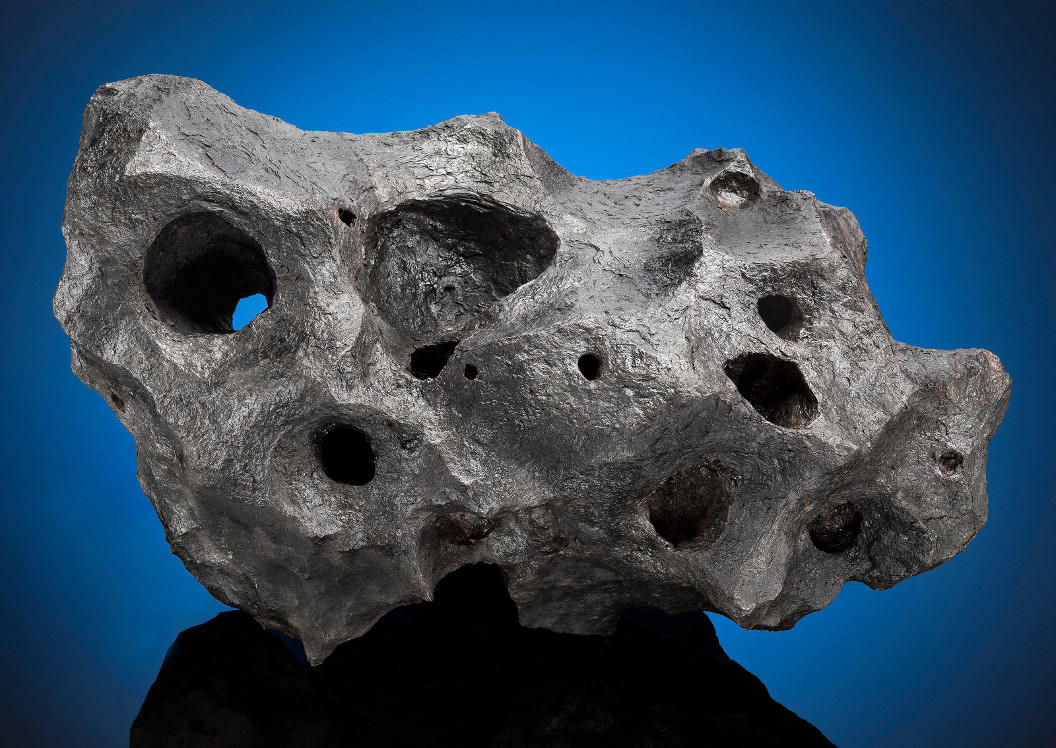Buy your own space artifact at this meteorite auction or just read the fun descriptions

Christie's is holding an auction of meteorites, and they're strikingly gorgeous. Prices? Anywhere from $1,000 to $250,000.
The essays attached to each meteorite are unusually fun to read. Auction-houses typically explain the provenance of an object up for bid -- but in this case, they're describing artifacts that originated in various far-flung parts of our solar system. They begin with a sort of Yelp-like description of the meteorite (in this case, the one above) ....
An uncommon smooth metallic surface delimits a somewhat ellipsoidal metallic abstract form. Numerous sockets and perforations abound in a very-rarely-seen proximity. Wrapped in a gunmetal patina with splashes of cinnamon and platinum-hued accents, this is among the most aesthetic iron meteorites known.... and then dive into the provenance:
Like all iron meteorites, the current offering is more than four billion years old and originated in the asteroid belt between Mars and Jupiter. Evocative of a Henry Moore, this sculptural form was once part of the molten iron core of an asteroid that broke aparta portion of which was deflected into an Earth-intersecting orbit. It was approximately 49,000 years ago that it plowed into the Arizona desert with the force of more than 100 atomic bombs. Fragments were ejected more than 11 miles away from the point of impact and the main mass vaporized, creating the most famous and best-preserved meteorite crater in the worldthe renowned Meteor Crater near Winslow, Arizona nearly one mile across and 600 feet deep. The fragments of iron that survived the impact are referred to as Canyon Diablos (Canyon of the Devil), and they are the quintessential American meteorite prized by museums and private collectors everywhere. [snip]Canyon Diablos are noted for containing nodules of graphite and carbonados (minute black diamonds). In the specimen now offered, it was the ejection of the graphite inclusions that resulted in the sculpting of sockets or hollows in the mass. In a process referred to as terrestrialization, these sockets expanded in size when exposed to Earths elements as the seasons turned over tens of thousands of years. Some of these hollows expanded sufficiently to entirely penetrate the mass resulting in the sought-after rarity of a naturally formed hole. This meteorite has seven such complete holes, perhaps the most of any single iron meteorite.
(Image used with permission of Christie's)
Original Link: http://feeds.boingboing.net/~r/boingboing/iBag/~3/cPkKFyDOjLQ/meteorite-auction.html


